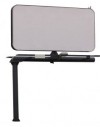Cross-posted at www.JudeKnightAuthor.com as part of our ongoing marketing series.
In recent posts in the series Mari Christie and I are writing on marketing in the bazillion book marketplace, we’ve been talking about marketing plans. Posts have focused on audience and purpose. What do we want to achieve? Who do we need to reach? We’ve begun to talk channels. Where will we go to find our readers? But we don’t yet have a plan.
A marketing plan is our map for the journey to the destination ‘book sales’. But deciding you’re flying to the Caribbean for a holiday is only the first step in a travel plan. You need to do a lot more planning and take a heap of actions before you can drink cocktails under a beach umbrella. And a marketing plan is no different.
So we’re going to talk tools and tactics: the mechanisms you’ll use to get to your destination (the savings account, the airplane), and the actions you’ll take (put aside 2% of your pay packet, buy a ticket).
So watch for posts on various tools and tactics. This week: giveaways.
Promote your book by running a giveaway
Hosting creative giveaways can help draw attention to your book. But making sure they give you the results you want takes a bit of planning.
Keep it simple — but be clear about what you want to achieve
Do you want more subscribers to your newsletter? More followers on Twitter? More party-goers at your Facebook launch party? Design your giveaway questions to get the results you’re after. Be creative. You could ask those who enter to:
- share a particular post
- comment on a particular post
- post a phot
- post a caption to a photo
- come up with a name for something in your next book: a character, pet, house, ship, town… or even book title
- answer questions about what they enjoy in books.
Choose a prize people want — and that works for you
The better the reward, the more entries you’ll get. At the same time, you want entries from people who are interested in the type of book you write. A $50 Amazon card may be attractive, but it might also attract people who are only interested in the prize, not your book. Here’s a post Mari wrote on prizes.
Consider combining with other authors to make a bigger prize.
Use multiple forms of social media to promote
Different people focus on different types of social media, so make sure you promote your giveaway on Twitter, Facebook, Pinterest and wherever else you have a presence. Use the word ‘giveaway’ in the title and tell people about the prize.
Pay attention
During the giveaway, visit the posts and comment. Talk to those entering. Show an interest.
Finish gracefully
Announce your winner or winners as soon as practical after the giveaway is over. Send out the prizes straightaway. Thank all those who have participated.
Watch the legal stuff
A sweepstake is a promotion where the winner is chosen by a random drawing. A contest is a promotion where the winner is chosen on merit (by vote or a judging panel). You can safely call them both giveaways, but be careful not to call a sweepstake a contest.
You need to state the prize, the deadline, and the conditions of entry up front, and you can’t change those after you’ve started. You can’t charge a fee to enter and you must accept all valid entries.
 Judy holds a Masters in Communication, and is accredited in public relations through the Public Relations Institute of New Zealand. As a writer and editor for a broad range of government and private-sector organizations, she has applied her clear writing skills to topics as diverse as insurance, climate change, income tax, genetics, finance, local government, and health.
Judy holds a Masters in Communication, and is accredited in public relations through the Public Relations Institute of New Zealand. As a writer and editor for a broad range of government and private-sector organizations, she has applied her clear writing skills to topics as diverse as insurance, climate change, income tax, genetics, finance, local government, and health.







